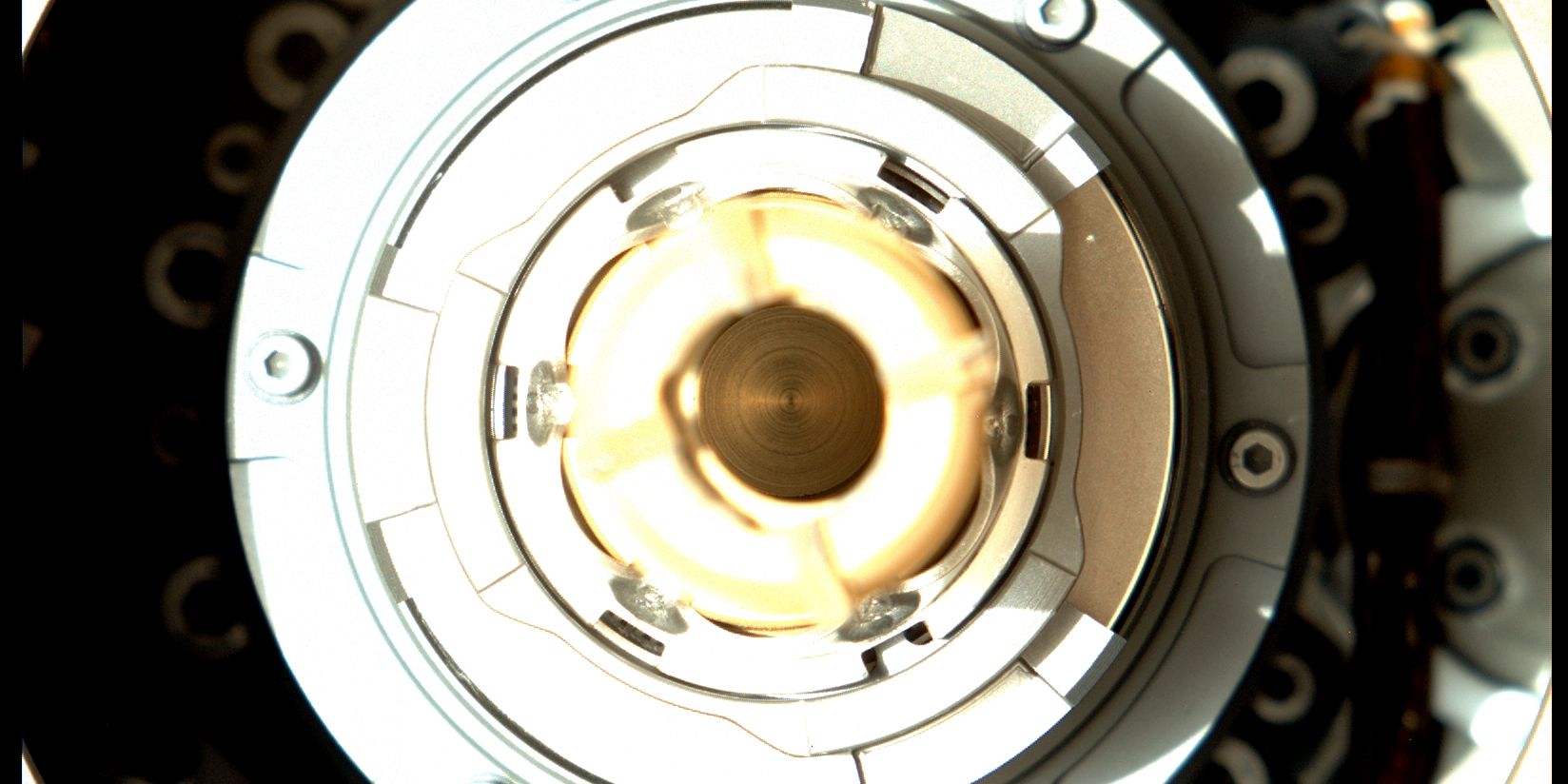NASA’s Perseverance encountered a serious issue with its rock collecting mission in late December, but thanks to some successful troubleshooting, the Mars rover is one step closer to getting back to normal. Since its arrival on Mars last February, Perseverance has been an invaluable tool for Mars exploration. It’s shared thousands of photos of the Red Planet, confirmed valuable information about the Jezro Crater, and — of course — collected numerous rock samples.
Perseverance’s ability to drill and collect rocks is unlike anything NASA’s created before. Using a series of onboard tools, the rover can drill and core a rock, extract precious samples, put those samples in a secure tube, and then seal the tube for safekeeping. It does this with full autonomy and has performed it multiple times without a hitch. On December 29, however, something went wrong. Perseverance cored and collected its latest sample just fine, but it failed to transfer it to the collection tube. The culprit? Debris the size of pebbles. NASA’s been attempting to remove that debris ever since, and nearly a month later, there’s finally some good news.
After announcing a plan last week for removing the debris, it appears things went exactly as NASA hoped. In a blog post published on January 21, the organization confirmed two major successes. First of all, the two pebbles causing the unsuccessful transfer to the tube have been removed! NASA also removed ‘most’ of the cored rock that was stuck inside Sample Tube 261 — meaning it can be reused for other samples later on.
How NASA Cleared The Pesky Debris

How in the world did NASA pull this off? Let’s start with how it removed the pebbles. After taking pictures of the pebbles with Perseverance’s WATSON camera, NASA rotated the bit carousel 75 degrees and then back to its normal position. WATSON took more photos following this move, and upon doing so, found that the two pebbles were gone! NASA took additional images of the ground below Perseverance, and sure enough, the pebbles are now lying on the Martian surface. There are still two smaller pebbles below the bit carousel, though NASA says they “may not pose a significant problem with bit carousel operation.” Regardless, the team is “continuing analysis and testing to confirm this.”
NASA performed a similar test with Sample Tube 261. With the tube in one of Perseverance’s arms, NASA opened it up and angled it 9 degrees below horizontal. Perseverance’s drill spindle then rotated and extended the tube — basically tipping it over to see if the sample material would fall out. And it did! NASA confirmed this using Perseverance’s Mastcam-Z camera, confirming the material was ejected. NASA did this again two days later and, in very scientific terms, said that the team “essentially shook the heck out of it for 208 seconds.” Now that Tube 261 is all cleared out, NASA can use it again for another (hopefully successful) sample mission.
While Perseverance isn’t quite ready to start collecting samples again, this is still a huge step in the right direction. Most of the debris is gone, the sample tube can be reused, and there doesn’t appear to be any damage to Perseverance during any part of this. Considering how much worse this could have been, it’s hard to ask for a better outcome.





